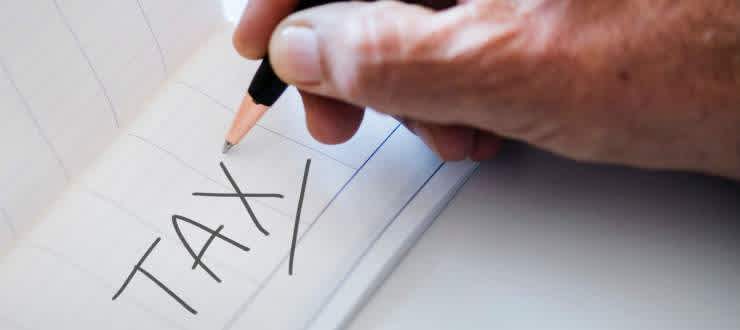GUIDES
What is a pension and how does it work?
This guide explains what a pension is, how best to save into one, how to use it to provide an income in retirement and why having a pension could be one of the best financial decisions you make.
Now more than ever, we all need to put a little away for our later years. There are good reasons for this. For a start, everyone in the UK is, on average, living longer. And, although we’re also working longer, most of us hope to do amazing things in retirement.
Those plans could include world travel, spending time with family, moving to the countryside, perhaps even starting a small business. But whatever way we choose to spend our time, we’ll have to replace our regular salaries with other funding if we want to live a modest or comfortable lifestyle. One of the best solutions is to save into a pension. But pensions have become confusing — with many different types available, suitable for different people.
Why save into a pension?
Many people ask ‘why is pension saving so important? Why don’t I just put money into my bank account for my old age?’
The answer lies mainly in the tax advantages the government gives to pension savers to encourage us to put money away.
When you pay money into your pension account – whether it’s created through your job, or one you’ve set up yourself – the government gives tax relief on that money. This can make a huge difference to the amount that you eventually save for retirement. It makes sense to take advantage of this valuable tax concession¹.
It means that, as well as you, the government is paying money into your plan.
In the UK, we pay three different rates of income tax depending on our earnings. The government will automatically add the basic rate tax to our pension savings. If we pay higher rate tax, we can claim it back through our tax returns. The following examples show the difference tax breaks can make to your pension savings.
Tax breaks of the different rates
Non-taxpayers
If you are not earning enough to pay the basic rate of tax you can still contribute to a pension - non tax payers can contribute up to £3,600 per year with 20% of this coming from the tax man.
Basic rate
For Basic Rate taxpayers, the government will add to your pension pot the 20 per cent tax you originally paid. So if you put in £80, the government will add an extra £20, making the contribution £100. You won’t have to do anything — it happens automatically. This means a £100 pension contribution will have cost you £80.
Higher rate
For Higher Rate taxpayers, the government will add basic rate tax to your pension pot automatically. However you may have to reclaim the higher rate tax yourself through your tax return. So if you put in £80, the government will add the first £20 automatically. You can then reclaim an extra £20 yourself. In the end, a £100 contribution will have cost you just £60. If contributions are made via the PAYE system, the higher rate tax relief is automatically added to your pension.
Additional rate
For Additional Rate taxpayers, the same system applies, but you’ll have to reclaim the additional-rate tax through your tax return. In the end, a £100 contribution will cost £55. It’s important to note some additional rate taxpayers may have this allowance reduced, therefore it’s important to receive financial advice before making contributions.
Auto-enrolment
If you work for a company, you probably have a workplace pension and your employer has to make extra contributions, boosting its value more. If you choose to make extra contributions into your pension, some employers will also match them with extra contributions of their own. It’s worth checking whether your employer does this as it makes saving extra into these pensions even more attractive.
Most employers must make a minimum contribution to their employees’ pension under a process called auto-enrolment, and to get this contribution you must contribute too. The minimum contribution is based on your ‘qualifying earnings’ - earnings from employment, before income tax and National Insurance contributions are deducted, that fall between a lower and upper earnings limit set by the Government.
Your employer can choose to make more than the minimum contribution and limits have changed in April 2019, increasing to 8%. Of that percentage, 5% is paid by you and detracted from your salary and 3% is paid by your employer.
It may also be possible to save into your pension through ‘salary sacrifice’, where you give up part of your salary and receive pension contributions instead. Depending on your circumstances, this could save you tax and National Insurance contributions, so check with your employer how it might work for you.
Why there are so many types of pensions?
The word ‘pension’ covers many different types of account, as well as payments from the state. Here are some of the most important types of pension and how they differ.
Defined benefit pensions
With these pensions the amount of income you receive is guaranteed and defined at the outset. Many defined benefit schemes are now closed and have been replaced with defined contribution arrangements.
Defined contribution pensions
These are now the most common type of pension. An individual and/or employer pay contributions into a scheme and the money is invested. How much you get at the end depends on how those investments perform. Defined contribution schemes include:
Workplace pension, offered by employers
Stakeholder pension, a simple form of personal pension offered privately or by employers
Self Invested Personal Pensions (SIPP), a more 'hands-on' personal pension, private or offered by employer, where you manage your own investments
These pensions shouldn’t be confused with the State Pension, which the government pays everybody when they reach a certain age, if they’ve met certain conditions.
Your State Pension and ISAs - what will you get?
The weekly amount you receive as state pension and when you receive it will depend on a number of factors including how long you worked for, your age and your level of national insurance contributions. To get a personalised forecast of how much you will receive and when, try the official Government's calculator here.
Another option for saving for retirement is the Lifetime ISA. Although not technically a pension, this is often seen as an alternative to retirement saving. To open a Lifetime ISA you need to be over 18 and under 40 years of age.
The money put in can only be used to buy a first home or taken as retirement income after the age of 60. The government adds a 25 per cent bonus to your savings, up to £1,000 a year.
You could also save money into an ordinary ISA and use it for retirement, however the government will not add the tax back in the same way as it does in a pension. The advantage of an ISA is that you can take out the money at any point, unlike a pension, where this is limited, and that money taken out of an ISA is not taxed as income as it is if it is taken out of a pension.
How can I choose the right pension for me?
With so many different pensions, it’s hard to work out what you need. Here are examples of how different options might suit different people.
Mrs A wants a pension with a smaller range of funds, where she is more hands on. She might be best with a stakeholder pension, with low charges and a simple structure.
Mr B works in a company where his employer will match his pension contributions if he makes extra payments. He may want to consider paying in as much as possible into his workplace pension to make the most of this.
Mrs C wants more control over her pension and to pick her own investments. A SIPP would perhaps allow her a large choice of potential investments.
If you’re unsure which pension is right for you, talking to a financial adviser or the government pension service could to help clarify things for you. For more info, read our guide on how to start a pension.
How does my pension grow?
The money in your pension pot doesn’t just grow because you add to it. It’s usually invested into a variety of different assets, including shares listed on the stock market, commercial and residential property and debt issued by companies and countries. The benefit of compound interest - growth on growth you have already received over time - is a real benefit of long term investing.
Studies show that over the long term, investing in assets like these usually yields better results than leaving money in the bank, although the value of investments can go up as well as down. You can choose pension funds with different levels of risk, depending on your needs and how comfortable you feel about investments. Most pension funds have a mix of different assets, which may include cash, stocks and shares, government and corporate debt and other assets such as commodities (these could include gold, coffee etc).
The performance of some assets is generally more volatile than others over time, which makes some funds riskier than others. The flip side of this is that the growth of the fund could be faster.
What happens when I retire?
You’ll have some choices about how to use your pension when you retire. Pension savings can be accessed from the age of 55 (rising to 57 by 2028). You can use your pension savings to buy an annuity – a type of insurance policy that gives you a lifetime income – or you can withdraw it all at once or gradually and use it to live on, under new rules known as pension freedoms.
Getting this process (often called decumulation) right can be complex, so the government has a service called Pension Wise, which offers free appointments to those nearing retirement.
We can help you to make the right choices at retirement.
- This is subject to your annual tax allowances



